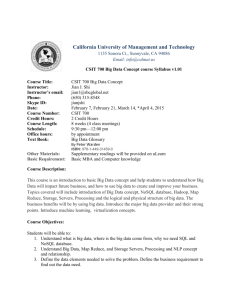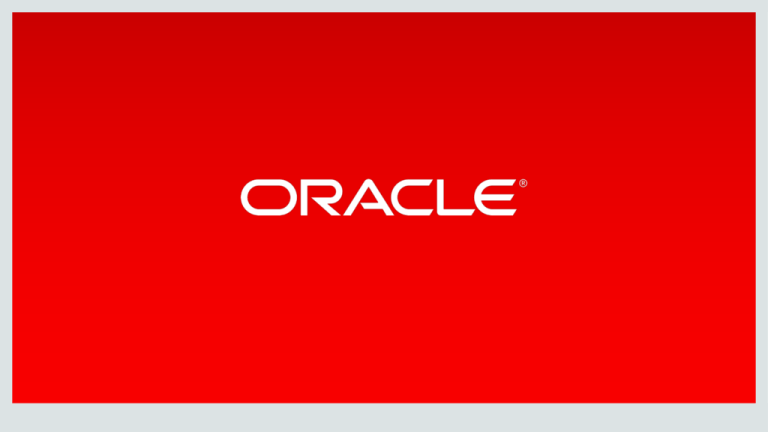
Oracle Application Express 5
Architecture & Administration
<Name>
<Title>
<Organization>
<Date>
Copyright © 2014 Oracle and/or its affiliates. All rights reserved. | 2
Safe Harbor Statement
The following is intended to outline our general product direction. It is intended for
information purposes only, and may not be incorporated into any contract. It is not a
commitment to deliver any material, code, or functionality, and should not be relied upon
in making purchasing decisions. The development, release, and timing of any features or
functionality described for Oracle’s products remains at the sole discretion of Oracle.
Copyright © 2014 Oracle and/or its affiliates. All rights reserved. | 3
Agenda
1
Oracle Application Express Overview
2
Architecture
3
Database Configuration
4
Managing Instance Settings
5
Deploying Applications
6
Tuning / Performance
7
Reference Material
Copyright © 2014 Oracle and/or its affiliates. All rights reserved. | 4
Oracle Application Express
Overview
Copyright © 2014 Oracle and/or its affiliates. All rights reserved. | 5
Oracle Application Express
Database-centric web application development framework
Develop desktop and
mobile web apps
Visualize and
maintain
database data
Leverage SQL Skills
and database
capabilities
Copyright © 2014 Oracle and/or its affiliates. All rights reserved. | 6
Oracle Application Express
Distinguishing Characteristics
App Development IDE is
a web browser.
No client software
needed
App definitions are stored in
the database as meta data.
Declarative – No code
generation
Page generation is efficient
with only one request and
one response.
Data processing done in the
Database
Copyright © 2014 Oracle and/or its affiliates. All rights reserved. | 7
Oracle Application Express
Develop faster, release more frequently
Go from prototype to production in minutes
Develop
Customize
Deliver
Copyright © 2014 Oracle and/or its affiliates. All rights reserved. | 8
Oracle Application Express
Use Cases
Developing opportunistic
& self service web apps
Extending enterprise
application solutions
Migrating file based and
client server apps to the web
Copyright © 2014 Oracle and/or its affiliates. All rights reserved. | 9
Oracle Application Express
No cost feature of the Oracle Database
• No-cost fully supported feature
• Any number of developers, apps, & end-users
• Specialized Oracle Support Team
• 11gR1, 11gR2, 12c
• All DB editions: EE, SE, SE1, XE
• Included with Oracle Cloud Services
• Schema and PDB services 5, 20, 50 GB
• Dedicated DBaaS services
• No cost evaluation http://apex.oracle.com
• Easy to install
• Included by default with all editions of Oracle database
• Download latest release from http://otn.oracle.com/apex
Copyright © 2014 Oracle and/or its affiliates. All rights reserved. | 10
History
Also known as Oracle APEX (āʹpěks)
HTML DB 1.5
APEX 2.1
First Release
Oracle XE
HTML DB 1.6
APEX 2.2
Themes
APEX 3.1
APEX 4.0
Interactive Reports
Packaged Applications
2004
2005
HTML DB 2.0
SQL Workshop
2006
2007
APEX 3.0
Flash Charts
PDF Printing
Access Migration
2009
2008
APEX 3.2
Oracle Forms to APEX
Conversion
APEX 4.2.x
Websheets
Dynamic Actions
Plug-Ins
Team Development
2010
2011
APEX 4.1
Data Upload
Error Handling
ROWID
Mobile
HTML5
Packaged Apps
2012-14
2015
APEX 5.0
Page Designer
Universal Theme
Modal Dialogs
Copyright © 2014 Oracle and/or its affiliates. All rights reserved. | 11
Oracle Application Express (APEX 5)
#ORCLAPEX
Development Community; Very involved, enthusiastic worldwide community
• ~ 400,000 developers
Based on developer downloads, support tickets, check for updates data
• Consulting companies, hosting companies, books, applications, success
stories and quotes:
http://apex.oracle.com/community
• 75+ active bloggers:
http://www.odtug.com/apex
• Very active Forum:
https://community.oracle.com/community/database/developer-tools/application_express
Copyright © 2014 Oracle and/or its affiliates. All rights reserved. | 12
Books
Copyright © 2014 Oracle and/or its affiliates. All rights reserved. | 13
Oracle Application Express
Architecture
Copyright © 2014 Oracle and/or its affiliates. All rights reserved. | 14
Oracle Application Express
3 Tier Architecture
Apache
OHS
Schemas
ORDS
Oracle APEX
Web Logic Server
WLS
Browser
Mid Tier
Oracle
Database
Database Tier
Copyright © 2014 Oracle and/or its affiliates. All rights reserved. | 15
Web Listener Options
Oracle REST Data Services (formerly APEX Listener)
• Written in Java
• Runs on J2EE compliant Web Servers
• Fully supported on Oracle WebLogic Server / Oracle Glassfish / Tomcat
Embedded PL/SQL Gateway (EPG)
• Included with Oracle Database 11gR1 and above
• Utilizes XML DB HTTP protocol server within the database
Oracle HTTP Server
• Utilizes Apache and mod_plsql
Copyright © 2014 Oracle and/or its affiliates. All rights reserved. | 16
Web Listener Architecture
Oracle REST Data Services (ORDS)
Copyright © 2014 Oracle and/or its affiliates. All rights reserved. | 17
Web Listener Architecture
Embedded PL/SQL Gateway (EPG)
HTTP Server
Embedded
PL/SQL Gateway
Copyright © 2014 Oracle and/or its affiliates. All rights reserved. | 18
Web Listener
Configuration
Oracle Rest Data Services
• Database configuration maintained through SQL Developer 3.2 or above
Oracle HTTP Server
• Apache Configuration files
• Database Access Descriptor (DAD)
o Name
o Database to connect to
Embedded PL/SQL Gateway
• Database Access Descriptor within the database
Copyright © 2014 Oracle and/or its affiliates. All rights reserved. | 19
Web Listener Architecture
Serving many APEX Instances
apex_1
apex_2
apex_3
Copyright © 2014 Oracle and/or its affiliates. All rights reserved. | 20
Web Listener Architecture
Load Balancing
server_1
server_2
server_3
Copyright © 2014 Oracle and/or its affiliates. All rights reserved. | 21
Browser Requests
Page requests and page submissions
• Sample URL
f?p=105:12:1675::NO:ARG1:VAL1
• Executes Database procedure
• ‘f’ procedure with parameters ‘p=…’
• Called procedure writes HTML to internal buffer using the
PL/SQL Web Toolkit (HTP, HTF, OWA, OWA_UTIL)
• Results returned from buffer to browser
• APEX is built on top of the PL/SQL Web Toolkit
Copyright © 2014 Oracle and/or its affiliates. All rights reserved. | 22
Page Processing
How the APEX Engine processes calls to f?p=…
Page Request / Submission processing adds minimal overhead
Copyright © 2014 Oracle and/or its affiliates. All rights reserved. | 23
Simplistic Overview of an APEX Request
DB Session Pool
Copyright © 2014 Oracle and/or its affiliates. All rights reserved. | 24
Connection Pool
• Maintains a pool of database connections
• PL/SQL package state reset before every request
• Database sessions are ACTIVE only when performing a
request, otherwise, connected but INACTIVE
Oracle Rest Data Services
• JDBC Connection parameters
Single-threaded Oracle HTTP Server
• MinSpareServers / MaxSpareServers / MaxClients
Embedded PL/SQL Gateway (init.ora)
• SHARED_SERVERS / MAX_SHARED_SERVERS
Copyright © 2014 Oracle and/or its affiliates. All rights reserved. | 25
Connection Pool
Reviewing Active Sessions
• Only active page requests are consuming resources
• Inactive sessions are idle
Copyright © 2014 Oracle and/or its affiliates. All rights reserved. | 26
Parsing of SQL
• Physical connection from pool established as APEX_PUBLIC_USER
– Minimally privileged database user
• An APEX workspace is mapped to one or more database users
(schemas)
• These DB users parse the SQL of APEX applications
• SYS.DBMS_SYS_SQL enables the APEX engine to parse SQL
as another user
Copyright © 2014 Oracle and/or its affiliates. All rights reserved. | 27
Single Database Instance serving Multiple Departments
Easily managed with optional self-service provisioning
• Workspaces used to define application
definitions / Schemas hold data
• Many-to-many relationship between
Workspaces and Schemas
• Instance Administrators manage the
environment and schema access
• Departments can request more space,
and access to a new schema
• For example, http://apex.oracle.com
has over 20,000 Workspaces
as of July, 2014
Copyright © 2014 Oracle and/or its affiliates. All rights reserved. | 28
Data Sources
Utilize the Oracle Database / Web Services
Copyright © 2014 Oracle and/or its affiliates. All rights reserved. | 29
Minimize use of Database Links
• Database links can be “chatty”
• Strongly recommend materialized views or refreshable tables
• Only use database links when no other option available
• apex_util.close_open_db_links – configure in ORDS
<entry key="procedure.postProcess">apex_util.close_open_db_links</entry>
<entry key="procedure.preProcess">apex_util.close_open_db_links</entry>
• “Sniper” database job
Copyright © 2014 Oracle and/or its affiliates. All rights reserved. | 30
3
Oracle Application Express
Database Configuration
Copyright © 2014 Oracle and/or its affiliates. All rights reserved. | 31
Database Settings
Create Tablespaces {Names arbitrary}
• APEX_TS_040200 for the Application Express user
o Tablespace Name is APEX Version specific
(e.g. APEX 4.0 would use APEX_TS_040000)
o Upgrade APEX into new Tablespace allows for better management
• APEX_TS_FILES for the Application Express files user
• APEX_TS_TEMP for temporary tablespace
@apexins APEX_TS_040200 APEX_TS_FILES APEX_TS_TEMP /i/
Define Database Parameters
• SHARED_POOL_SIZE
• JOB_QUEUE_PROCESSES
Copyright © 2014 Oracle and/or its affiliates. All rights reserved. | 32
SGA Sizing
•
Undersized SGA can hamper APEX performance
•
•
•
Insufficient memory in Shared Pool for PL/SQL
Insufficient memory for Buffer Cache for APEX metadata
Advice
•
•
•
V$SGA_TARGET_ADVICE / V$SGA_INFO
V$MEMORY_TARGET_ADVICE
SGA should always fit in real memory
Copyright © 2014 Oracle and/or its affiliates. All rights reserved. | 33
Database Schemas
APEX_040200 APEX Engine Schema {Name is version specific}
• Should be installed into own tablespace and monitored
• Holds APEX logs / application definitions (meta-data)
Application Schemas – Configured by Instance Administrator(s)
•
Specify if New Schema required
{ Manage Instance > Instance Settings > Storage }
•
Specify if Tablespace Autoextend = True
{ Manage Instance > Instance Settings > Storage }
•
Define Initial Workspace Sizes
{ Manage Instance > Instance Settings > New Workspace Request Size }
•
Define Change Request Sizes
{ Manage Instance > Instance Settings > Workspace Change Request Size }
Copyright © 2014 Oracle and/or its affiliates. All rights reserved. | 34
Database Jobs
• ORACLE_APEX_PURGE_SESSIONS
– Delete session information from APEX tables for sessions older than 12 hours
– Runs every hour
• ORACLE_APEX_MAIL_QUEUE
– For e-mail messages authored with APEX_MAIL
– Send e-mail in queue
– Runs every 5 minutes
• ORACLE_APEX_DAILY_MAINTENANCE
– Archive activity log
– Automatic file deletion
– Runs at 0100 system time
• ORACLE_APEX_WS_NOTIFICATIONS
Copyright © 2014 Oracle and/or its affiliates. All rights reserved. | 35
Database Backup
• Use Java programs provided with APEX Installation
– Define job to perform nightly application exports to Source Control
– Define job to perform nightly application component exports
• Standard Oracle Backup of complete database
– Can restore “workspace” schemas
– Restores the developer defined database objects and data
– Does not restore application definitions
– Can restore APEX Engine Schema
– Restores APEX meta-data for all workspaces and applications
– Can NOT restore individual workspaces or applications
– Must import APEX Engine Schema into separate database and then export
Copyright © 2014 Oracle and/or its affiliates. All rights reserved. | 36
Database Flashback
Flashback availability based on DB settings and space allocation
• Can export application “as of”
• Can retrieve report source, etc.
Copyright © 2014 Oracle and/or its affiliates. All rights reserved. | 37
Database Resource Manager
•
•
•
•
•
•
Guarantee minimum amount of resources, regardless of load
Multiple Groups and resource plans among those groups
Automatically switch between groups (HIGH, LOW, BATCH)
Cancel SQL or Kill Session
Can assign a workspace to a Resource Consumer Group in APEX
* EE only feature
Copyright © 2014 Oracle and/or its affiliates. All rights reserved. | 38
Database Resource Manager
Profile used on apex.oracle.com
APEX_HIGH – default group, 70% for 10 seconds
APEX_MEDIUM – 8% for 120 seconds
APEX_LOW – 2% for 1800 seconds
OTHER_GROUPS – 20%
OTHER_GROUPS
APEX_LOW
APEX_MEDIUM
APEX_HIGH
Copyright © 2014 Oracle and/or its affiliates. All rights reserved. | 39
Partition APEX Tables
• Typically only relevant for multi-node RAC clusters
• Will manifest itself in AWR as GCS / GES wait events
(Global Cache Service, Global Enqueue Service)
• Only when necessary, partition the “hot” tables of APEX
apex/utilities/apxpart.sql
Copyright © 2014 Oracle and/or its affiliates. All rights reserved. | 40
4
Oracle Application Express
Managing Instance Settings
Copyright © 2014 Oracle and/or its affiliates. All rights reserved. | 41
Application Express Users
Instance Administrator
• Manage Requests (Workspace Provisioning)
• Manage Instance (Settings, Shared Components, Meta Data, Messages, ...)
• Manage Workspaces
• Monitor Activity
Workspace Administrator
• Manage Service (Requests, Preferences, Utilization)
• Manage Users
• Monitor Activity
Developer
End User
Copyright © 2014 Oracle and/or its affiliates. All rights reserved. | 42
Workspace Request Modes
Manual: Administrator must manually create each workspace
Request: Workspace requests from link on APEX home page,
immediately created after Administrator approval
Email Verification: Like Request, but workspace created after e-mail
verification (2-step process)
Copyright © 2014 Oracle and/or its affiliates. All rights reserved. | 43
Workspace Request Modes
Manual
• Use for complete control over workspaces in your instance
Email Verification
• Workspace, tablespace, data file and database user not created
until e-mail address is confirmed
• Will avoid users requesting workspaces with malformed e-mail
addresses, consuming space which will never be used
Copyright © 2014 Oracle and/or its affiliates. All rights reserved. | 44
Workspace Provisioning Steps
1. * Tablespace and Data File created
2. * Database User created with unlimited quota on newly
created tablespace
3. Workspace Created in APEX
4. Database User Mapped to Workspace
5. * Sample Application installed in workspace
6. * Email Notification Sent
Copyright © 2014 Oracle and/or its affiliates. All rights reserved. | 45
Workspace Provisioning – Data Files
By default, workspace data files created in same directory
as tablespace for APEX (APEX_xxx.DBF)
Oracle Managed Files
•
•
•
•
Gives DBA complete control over file location
DB_CREATE_FILE_DEST init parameter
o1_mf_%t_%u_.dbf
/u03/oradata/apex/APXPRD/datafile/
o1_mf_flow_25_339bpw79_.dbf
Copyright © 2014 Oracle and/or its affiliates. All rights reserved. | 46
Instance Security
Application Builder User Guide – Chapter 15 : Administrator Security
1. Use HTTPS
{ Instance Administration > Manage Instance > Security > HTTPS }
2. Set Password Complexity and Expiration
{ Instance Administration > Manage Instance > Security > Workspace Login
Control / Password Policy }
3. Runtime only for Production / QA / Test environments
{ Installation Guide – Chapter 3.3.2 (6.) Select the appropriate installation option
}
4. Session Timeout
{ Instance Administration > Manage Instance > Security > Session Timeout }
5. Enable Network ACL
Copyright © 2014 Oracle and/or its affiliates. All rights reserved. | 47
Feature Configuration
Application Development
• Allow PL/SQL editing; Create demonstration objects, Websheet objects;
Enable SQL and PL/SQL in Websheets
SQL Workshop
• Inactivity time; Max script output; Max workspace output; Max script
size; Enable transactional SQL; Enable RESTful Services
Monitoring
• Enable Database monitoring; Application Activity Logging; Application
Tracing
Workspace Administration
• Enable Service Requests
Copyright © 2014 Oracle and/or its affiliates. All rights reserved. | 48
Security Settings
Security
• Set Allow PL/SQL editing; Create demonstration objects, Websheet
objects; Enable SQL and PL/SQL in Websheets
HTTPS
RESTful Access
Session Timeout
• Max Session Length; Max Session Idle Time
• Developers can overwrite for each Application
Workspace Login Control
• Require User Account expiration and locking; Max login failures; Account
password lifetime
Copyright © 2014 Oracle and/or its affiliates. All rights reserved. | 49
Security Settings (cont.)
Workspace Password Policy
• Max password length; Min password differences; Must contain at least
one Alphabetic character, numeric character, punctuation character,
upper case character, lower case character; Must not contain username,
workspace name
• Must not contain {specified words} –
oracle:hello:welcome:guest:user:database
• Alphabetic characters {specified characters}
• Punctuation characters {specified characters} – !"#$%&()``*+,-/:;<=>?_
Service Administrator Password Policy
• Use Workspace password policy or default strong password
Copyright © 2014 Oracle and/or its affiliates. All rights reserved. | 50
Instance Settings
Self Service
• Provisioning Status; Require verification code; Notification
Email Provisioning
Storage
• Require new schema; Auto-extend tablespaces; Delete uploaded files
after
Email
• Instance URL; Images URL; SMTP host address, port, authentication
username and password; Use SSL/TLS; Default From address; Max emails
Wallet
• Path; Password
Copyright © 2014 Oracle and/or its affiliates. All rights reserved. | 51
Instance Settings (cont.)
Report Printing
• Print Server; Host address; Server Port; Server Script
Help
• URL – Can host Help inside firewall
New Workspace Request Size
• Specify size in Megabytes and default size
Workspace Change Request Size
• Specify size in Megabytes and default size
Copyright © 2014 Oracle and/or its affiliates. All rights reserved. | 52
Other Settings / Configuration
Workspace Purge Settings
• Automatically remove inactive workspaces
• Very good on Development instances where many signing up but not
utilizing
Define Login Message
Define System Message
Manage Site-Specific Tasks
Manage New Service Sign-Up Wizard
• Agreement; Survey questions and answers (formed into radio group);
Pre text; Post text
Copyright © 2014 Oracle and/or its affiliates. All rights reserved. | 53
Manage Workspaces
Manage Developers and Users
• Unlock user accounts
• Create / remove workspace administrators
Manage Component Availability
• Allow or disallow access to:
o Application Builder
o SQL Workshop
o PL/SQL Editing
o Team Development
Copyright © 2014 Oracle and/or its affiliates. All rights reserved. | 54
Oracle Application Express
Deploying Applications
Copyright © 2014 Oracle and/or its affiliates. All rights reserved. | 55
Development Environment(s)
• Install “Full” Application Express; BI Publisher*
• Configure SSO*
• Create Workspaces / Schemas
• Grant rights to common schemas
• Allow Workspace Administrators to manage own workspace:
o Define other Workspace Administrators; Developers; End Users
Unlock / reset passwords for workspace accounts
o Request space
o Request additional Schema(s)
Copyright © 2014 Oracle and/or its affiliates. All rights reserved. | 56
QA / Test and Production
• Install “Runtime Only” Application Express; BI Publisher*
• Configure SSO*
• Define schemas
• Create Workspaces or export Workspaces from Development
• Grant rights to common schemas
• Import Applications from Source Control
• Run DDL Scripts from Source Control
• Run DML Scripts from Source Control
• [Optional] Create End Users (Application Administrators)
o Should manage end users from within application if not using SSO / LDAP
Copyright © 2014 Oracle and/or its affiliates. All rights reserved. | 57
Promoting Applications
1. Developer exports Application
3. Developer adds SQL Script(s) to Source Control
4. Developer provides Run Sheet to DBA
5. DBA obtains files from Source Control
2. Export generates a SQL Script
6. DBA Runs Script(s) in QA / Production
@f123.sql
Copyright © 2014 Oracle and/or its affiliates. All rights reserved. | 58
Copy Workspaces
• Export / Import Workspace using APEX Export
–From Workspace Administration
–From Instance Administration
• Manually specify ID during workspace creation
select workspace, workspace_id from apex_workspaces
• Benefits:
Easily replicate applications and other components between
APEX instances
Easily use SQL*Plus to install / upgrade APEX applications
Facilitate import of pages
Copyright © 2014 Oracle and/or its affiliates. All rights reserved. | 59
5
Use Consistent Application IDs
• In all environments, immediately propagate “placeholder” applications
• Always import applications using the same Application ID
• Benefits:
Easily replicate applications and other components between
APEX instances
Easily use SQL*Plus to install / upgrade APEX applications
Facilitate import of pages
Less work for APEX when replacing (upgrading) applications
Copyright © 2014 Oracle and/or its affiliates. All rights reserved. | 60
6
Development Standards
Application Security
• Authorization and authentication standards (can define plug-ins)
Application Naming standards
• Application Numbering / Groups
PL/SQL Components
• Naming Conventions; Headers; APIs; Use of Common Packages
Deployment standards
• Application Exports; DDL Scripts; DML Scripts
• Use of Source Control
Change Control
• Testing / Sign-Off procedures; Training procedures; Roll-out procedures
Copyright © 2014 Oracle and/or its affiliates. All rights reserved. | 61
How to develop Standards
• Author user interface guidelines
• Author naming conventions
• Author coding standards
• Examine code of the APEX Packaged Applications
• Use packaged application: Standards Tracker
http://davidsgale.com/apex-4-2-5-standards-tracker/
Copyright © 2014 Oracle and/or its affiliates. All rights reserved. | 62
6
Schema Isolation / Privileges
1. Only allow schemas to be assigned to workspaces if required
a) Don’t assign workspaces to sensitive schemas
b) Assign grants and synonyms to schema associated with workspace
2. Grant least privileges on tables
3. Use views / VPD to restrict access to sensitive columns
Copyright © 2014 Oracle and/or its affiliates. All rights reserved. | 63
Application Security
Application Builder User Guide – Chapter 15 : Developer Security
1. Understand Items of type Password
2. Understand Cross-Site Scripting protection
3. About Session State and Security
4. Understand Session State Protection
Copyright © 2014 Oracle and/or its affiliates. All rights reserved. | 64
Application Security Reviews
1. Use Application Advisor
{ Application Builder > Application xxx > Utilities > Advisor }
2. Utilize 3rd party tool to analyze applications in depth for
vulnerabilities
a) APEXSec Security Tool { https://secure.recx.co.uk/apexsec/ }
b) eSert { http://www.enkitec.com/products/esert }
Copyright © 2014 Oracle and/or its affiliates. All rights reserved. | 65
Operate like a Service Provider
• Use source code control (Subversion, GIT)
• Establish a nightly build process (Jenkins, Hudson)
• Know how to write patch scripts for your applications
• Automate installation testing of your application patches
• Ensure applications reviewed and tested before release
• Benefits:
Established processes in place, can react quickly
Easy to establish a “cadence” for updates
Copyright © 2014 Oracle and/or its affiliates. All rights reserved. | 66
6
Oracle Application Express
Tuning / Performance
Copyright © 2014 Oracle and/or its affiliates. All rights reserved. | 67
Identifying Performance Issues
• 98% of the time, the developer-authored
SQL & PL/SQL is the culprit
• 1% of the time, the problem is APEX – and it’s a bug
• 1% of the time, it’s something else
• AWR provides a wealth of information about
database performance
• Easy to correlate APEX applications to performance issues
Copyright © 2014 Oracle and/or its affiliates. All rights reserved. | 68
Application Express is Slow???
Determine where the bottleneck is
o
o
o
o
o
Client
Network
Middle-Tier
Database
Disk / Storage
Check Database Health
o
o
o
o
SGA
CPU Utilization
Locks
Database Parameters
Copyright © 2014 Oracle and/or its affiliates. All rights reserved. | 69
Slow Running Applications
Determine what else is running
o
o
o
o
Legacy Applications
Data Warehouse
Batch Programs
Database Jobs
Check the SQL and PL/SQL
Review the data model
Modify the Application
o 80/ 20 Rule Dissect business requirements
o Use “progress bar”; Prevent “multiple-clicks”
o Use collections
Copyright © 2014 Oracle and/or its affiliates. All rights reserved. | 70
Performance Diagnosis Steps
1.
2.
3.
4.
Identify time window
Isolate largest consumers of DB Time (sql_id, module)
Identify APEX workspaces, applications
Correlate SQL with specific location in an APEX application by
querying the APEX views
Copyright © 2014 Oracle and/or its affiliates. All rights reserved. | 71
Activity Log and Monitoring
• Monitoring by Workspace Administrators, Instance Administrators
Copyright © 2014 Oracle and/or its affiliates. All rights reserved. | 72
Application Page Performance
• Debug within APEX to identify expensive elements within a page
or process
Copyright © 2014 Oracle and/or its affiliates. All rights reserved. | 73
Database Traces
• TKPROF is an Oracle utility that formats SQL trace files
• No graphical interface for TKPROF
• Look in the user dump destination directory on the database
server file system.
– On OFA compliant systems this will be
$ORACLE_BASE/admin/$ORACLE_SID/udump
Copyright © 2014 Oracle and/or its affiliates. All rights reserved. | 74
Tracing from Application Express URL
• Generate Oracle Trace file for detailed examination of
all SQL associated with a page or process
• p_trace=YES name/value in URL
f?p=105:12:1675::NO:ARG1:VAL1&p_trace=YES
• Instrument code using ALTER SESSION
– DBMS_SESSION.SESSION_TRACE_ENABLE
– DBMS_SESSION.SESSION_TRACE_DISABLE
• Use TKPROF to analyze and format output
Copyright © 2014 Oracle and/or its affiliates. All rights reserved. | 75
Reviewing Traces with APEX Applications
• Pay attention to the parsing user_id in tkprof output
• Most APEX tables are named with a WWV_ prefix
• “Bind Peeking” and Adaptive Cursor Sharing:
– Are available for the SQL of the APEX engine
– Are not available for user SQL (your application SQL)
Copyright © 2014 Oracle and/or its affiliates. All rights reserved. | 76
Enterprise Manager Performance Page
• Active Sessions by wait class over time
• Colored area = amount of DB time
Copyright © 2014 Oracle and/or its affiliates. All rights reserved. | 77
Database Time
• Total time in database calls by foreground sessions
• Includes CPU time, IO time and non-idle wait time
• DB time <> Response time
Database time is total time spent by user
processes either actively working or
actively waiting in a database call.
Copyright © 2014 Oracle and/or its affiliates. All rights reserved. | 78
How to query Database Time
• V$SYS_TIME_MODEL, V$SESS_TIME_MODEL
– STAT_NAME = ‘DB time’
– Cumulative database processing time
• V$SYSMETRIC_HISTORY
– “Database Time Per Second”, “CPU Usage Per Sec”
– 10g units = centi-secs/sec (100xAvg. Active Sessions)
– 11g new metric “Average Active Sessions”
• V$SQL
– ELAPSED_TIME and CPU_TIME
– Wait class times:
APPLICATION, CONCURRENCY, CLUSTER, USER_IO
• V$ACTIVE_SESSION_HISTORY
Copyright © 2014 Oracle and/or its affiliates. All rights reserved. | 79
Active Session History (ASH)
• All ‘Active’ sessions captured every second
– Foregrounds and backgrounds are sampled
– Active foregrounds contribute to DB Time
• In-memory: V$ACTIVE_SESSION_HISTORY
– Sampling interval = 1 second
• On-disk: DBA_HIST_ACTIVE_SESS_HISTORY
– Sampling interval = 10 second
• ASH is a system-wide record of database activity
Copyright © 2014 Oracle and/or its affiliates. All rights reserved. | 80
Automatic Workload Repository (AWR)
• Collects performance statistics
– By default, every hour and retained for 7 days
• Active Sessions
• Resource Intensive SQL Statements
• Wait events
• Can establish baseline and compare with current.
• DBA_HIST_SNAPSHOT
• Shows top-level numbers about all snapshots in the
Workload Repository
Copyright © 2014 Oracle and/or its affiliates. All rights reserved. | 81
Application Express Views
• The database catalog of everything APEX
• Application definitions, workspaces, logs
• Display all views and columns
select * from apex_dictionary
• Display all view names
select distinct apex_view_name from apex_dictionary
• Can be queried via SQL*Plus, SQL Developer
or other command-line tools
• If granted APEX_ADMINISTRATOR_ROLE role,
can view across entire instance
Copyright © 2014 Oracle and/or its affiliates. All rights reserved. | 82
Application Express Views
APEX_WORKSPACES – all workspaces defined on the instance
APEX_APPLICATIONS – all APEX applications
APEX_WORKSPACE_ACTIVITY_LOG – all logged page views
APEX_WORKSPACE_APEX_USERS – all developers, administrators and
end users of a workspace
APEX_APPLICATION_PAGE_REGIONS – HTML regions, class SQL reports
Copyright © 2014 Oracle and/or its affiliates. All rights reserved. | 83
Application Express Activity Logs
• APEX_ACTIVITY_LOG shows all page views in a workspace
• APEX activity log is circular and does not persist (log switch every N
days, default = 14)
• Preserve yesterday’s log activity:
INSERT INTO my_activity_log
SELECT * from apex_activity_log
WHERE time_stamp BETWEEN
TRUNC(SYSDATE-1) and TRUNC(SYSDATE)
Copyright © 2014 Oracle and/or its affiliates. All rights reserved. | 84
PL/SQL Profiler
PL/SQL Profiler (10g)
PL/SQL Hierarchical Profiler (11g)
• Reports the dynamic execution profile of a PL/SQL program
organized by function calls
• Accounts for SQL and PL/SQL execution times separately
• No special source or compile-time preparation is required
Copyright © 2014 Oracle and/or its affiliates. All rights reserved. | 85
Query Plans and Statistics
• APEX is a large number of
database applications (PL/SQL)
• Cost-based optimizer will develop better
query plans with accurate statistics
GATHER_STATS_JOB
Copyright © 2014 Oracle and/or its affiliates. All rights reserved. | 86
Limiting Resources
• Resource Profiles
– Limit types of system resources (CPU, Logical Reads)
– Per Call Level applicable in APEX environment
• CPU_PER_CALL
• LOGICAL_READS_PER_CALL
• Not Applicable:
SESSIONS_PER_USER, CPU_PER_SESSION,
CONNECT_TIME, IDLE_TIME,
LOGICAL_READS_PERS_SESSION
Copyright © 2014 Oracle and/or its affiliates. All rights reserved. | 87
CPU Resource Monitoring
• Very fine-grained scheduling
– Resource Manager schedules at a 100 ms quantum
– Low-priority session will yield to a high-priority session in ~1
quantum
• Background processes are not managed
– Backgrounds are either high-priority or not CPU-intensive
• Maximize CPU utilization
– If one consumer group doesn’t use its allocation, it is redistributed
to other consumer groups based on the resource plan
Copyright © 2014 Oracle and/or its affiliates. All rights reserved. | 88
Monitor Resource Plan Utilization
• V$RSRC_PLAN – Currently active resource plan
• V$RSRC_CONSUMER_GROUP – Cumulative amount of CPU stats
• V$RSRC_PLAN_HISTORY – History of resource plan, when enabled,
disabled or modified
• V$RSRC_CONS_GROUP_HISTORY – History of consumer group
statistics
• V$RSRCMGRMETRIC – Information about resources consumed and
wait times per consumer group
• V$RSRCMGRMETRIC_HISTORY – History of Resource Manager
metrics
Copyright © 2014 Oracle and/or its affiliates. All rights reserved. | 89
V$SESSION
• Client Information:
Authenticated Username:
Workspace ID
• Client Identifier:
Authenticated Username:
Session ID
• Module:
Parsing DB User/APEX:
APP Application ID:Page ID1
Copyright © 2014 Oracle and/or its affiliates. All rights reserved. | 90
Oracle Application Express
Reference Material
Copyright © 2014 Oracle and/or its affiliates. All rights reserved. | 91
Useful Links
Collateral, Resources and Hosted Services
• Oracle Technology Network
• Oracle Learning Library
• Hosted evaluation site
• APEX Cloud Service
http://otn.oracle.com/apex
http://www.oracle.com/oll
http://apex.oracle.com
http://cloud.oracle.com
Copyright © 2014 Oracle and/or its affiliates. All rights reserved. | 92
OTN Application Express Forum
https://community.oracle.com/community/database/developer-tools/application_express
Copyright © 2014 Oracle and/or its affiliates. All rights reserved. | 93
Copyright © 2014 Oracle and/or its affiliates. All rights reserved. | 94
Copyright © 2014 Oracle and/or its affiliates. All rights reserved. | 95

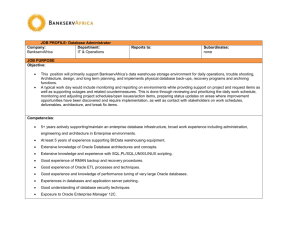
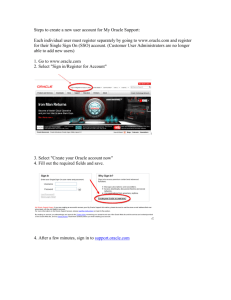

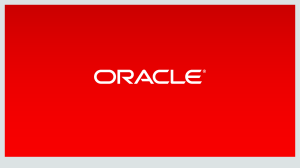
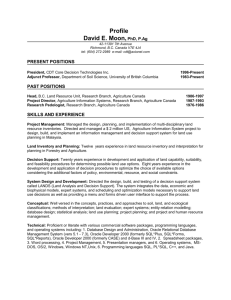
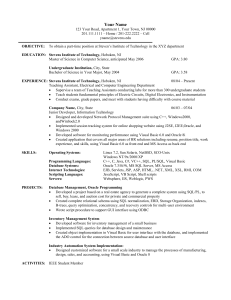
![Database Modeling and Implementation [Opens in New Window]](http://s3.studylib.net/store/data/008463861_1-79059dcf084d498c795a299377b768a6-300x300.png)
